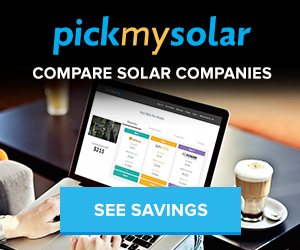Accelerated Depreciation – A depreciation method where your solar system loses value at a faster rate than straight line depreciation. This is related to commercial purposes.
Annual Savings – The amount of money you save per year by going solar.
APR – Annual percentage rate; this is the amount you are charged by the lender to borrow money.
Buy Down or Financing Fee – This is a finance charge that covers the costs and expenses associated with placing the loan. This is typically either a flat fee or a percentage of the of the borrowed total. A buy down is a solar financing technique similar to paying down points on a mortgage that helps you obtain a lower interest rate for the life of the loan. The purchase price will be increased to cover the points reduction on the interest rate.
Cash-out Refi – This is a refinance of the first mortgage of your home to a new mortgage for a sum greater than what is owed. Since the new mortgage is for a larger sum you keep the cash difference between the first mortgage and the new mortgage. Individuals will often do this to take advantage of a lower interest rate (APR) on the home.
Debt-to-Income Ratio – How much you owe divided by how much income you have. For example, if you pay $2000 a month for your mortgage and another $1000 a month for the remainder of your debts, your monthly debt payments are $3000. If your gross monthly income is $6000, then your debt-to-income ratio is 50 percent.
Down Payment – The initial payment made when purchasing a cash system. In California, this will be 10% or $1,000, whichever is less. In a loan purchase, a down payment would reduce the total amount financed, reducing your payments.
Escalator – In a PPA or Lease, this is the percentage amount that your monthly payments will increase year over year.
Gross System Price – This is the price of your solar system before any incentives (i.e. federal tax credit) are applied.
Internal Rate of Return (IRR) – A technique to measure the profitability of an investment. The higher the IRR the better the investment, generally.
Lease – A third-party owned solar system where the installer will own the solar system and you will make payment for the panels or the energy the panels produce.
Levelized Cost of Energy (LCOE) – This is the average cost of energy generated by a system over its lifetime. It is calculated by dividing the total amount the system will cost over its lifetime by the total amount of electricity generated. This number is useful for comparing different types of energy (solar, wind, natural gas, etc.).
Lifetime Savings – The amount of savings your solar system will realize over its lifetime. In most cases, this is projected over 25 years because panels have a 25-year warranty. Realized savings will be even larger as systems will continue to operate past that.
Loan Provider – The financing institution that is paying the contractor for your solar system in return for monthly payments.
Net System Price – The final out-of-pocket cost of your solar system after all incentives are applied.
Ownership – Owning the right to your solar system.
PACE – Property Assessed Clean Energy Financing is a public-private partnership that helps property owners finance renewable energy projects. Generally, payments are tied to your property taxes allowing flexibility for clients that wouldn’t otherwise be able to go solar.
Payback Period – The amount of time needed to go cash flow positive after an initial out of pocket investment.
PPA (Power Purchase Agreement) – This is a third-party owned electricity power agreement where the solar installer will own the system and sell the electricity to the homeowner. Therefore, the homeowners pay the solar installer for the electricity they use rather than the utility. These agreements are generally for 20 years. They may include an escalator.
Prepaid Lease/PPA – A 100% upfront payment for the value of the electricity generated for 20 years.
Price Per kWh – The price paid per unit of electricity used in a home (kilowatt hour).
Price Per Watt (PPW) – This is the most common way to compare the cost of a solar system. For example if your 6kW system cost $20,000 the price per watt is $20,000 / 5,000W = $4/Watt.
Re-amortization – The modification of a loan. This will often change the monthly payment.
Refinance (Refi) – Refinancing a loan to achieve a lower interest rate and terms that are more equitable to you.
Return on Investment (ROI) – The rate of return on an investment relative to its cost. The higher the rate, the better the investment.
Secured Loan – A loan where the borrower pledges some asset (i.e. home, solar system) as collateral for the loan.
Solar Financing – Financing provided to a client that needs financing specifically to move forward with solar energy.
Solar Loans – Loans specifically for solar.
System Cost – The cost of the solar system (see gross system cost).
System Payback – Another term for payback period.
Term (Lease or Loan) – The contractually agreed upon length of the solar loan (ranges from 12 to 20 years) or lease (usually 20 years).
Third Party Owned (TPO) – A solar system owned by a third party, typically the installer.
Unsecured Loan – A loan that has no collateral backing it. It is issued and supported by the borrower’s creditworthiness.






Add comment